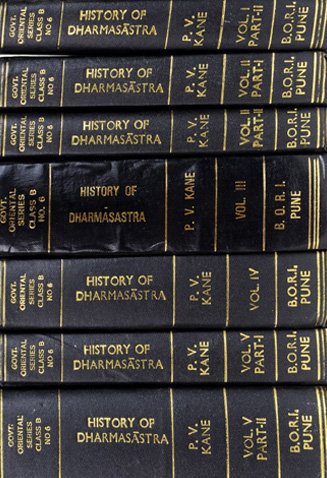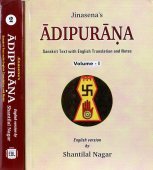Kurmapurana, Kūrmapurāṇa, Kurma-purana: 12 definitions
Introduction:
Kurmapurana means something in Hinduism, Sanskrit. If you want to know the exact meaning, history, etymology or English translation of this term then check out the descriptions on this page. Add your comment or reference to a book if you want to contribute to this summary article.
In Hinduism
Purana and Itihasa (epic history)
Source: archive.org: Puranic EncyclopediaKūrmapurāṇa (कूर्मपुराण).—One of the eighteen Purāṇas. (See under Purāṇas).
Source: Cologne Digital Sanskrit Dictionaries: The Purana IndexKūrmapurāṇa (कूर्मपुराण).—A Mahā purāṇa of 18000 ślokas1 said in the presence of Indra containing anecdotes of Indradyumna and of Lakṣmīkalpa. Gift of, with a golden tortoise on the ayanas equals a gift of 1000 cows.2
- 1) Bhāgavata-purāṇa XII. 7. 24; 13. 8; Viṣṇu-purāṇa III. 6. 23.
- 2) Matsya-purāṇa 53. 47, 49; Vāyu-purāṇa 104. 9.
Kūrmapurāṇa (कूर्मपुराण) refers to one of the eighteen Major Puranas according to the Matsyapurāṇa and other traditional lists of Puranic literature: a category of ancient Sanskrit texts which gives a huge contribution in the development of Indian literature.—The lists of eighteen Mahāpurāṇas (e.g., kūrmapurāṇa) and eighteen Upapurāṇas are not same everywhere, as some names are dropped in some references whereas some are included in others. It can be noticed that, except the Vāyuapurāṇa and the Śivapurāṇa, the names of the Mahāpurāṇas are similar in almost all the Purāṇas.

The Purana (पुराण, purāṇas) refers to Sanskrit literature preserving ancient India’s vast cultural history, including historical legends, religious ceremonies, various arts and sciences. The eighteen mahapuranas total over 400,000 shlokas (metrical couplets) and date to at least several centuries BCE.
Vaishnavism (Vaishava dharma)
Source: Prabhupada Books: Sri Caitanya CaritamrtaKūrmapurāṇa (कूर्मपुराण).—Śrīla Bhaktisiddhānta Sarasvatī Ṭhākura remarks that only two khaṇḍas of the Kūrma Purāṇa are now available, namely the Pūrva-khaṇḍa and Uttara-khaṇḍa. Sometimes it is said that the Kūrma Purāṇa contains six thousand verses, but originally the Kūrma Purāṇa contained seventeen thousand verses. According to Śrīmad-Bhāgavatam, there are seventeen thousand verses in the Kūrma Purāṇa, which is one of the eighteen Mahā-purāṇas. The Kūrma Purāṇa is considered the fifteenth of these Mahā-purāṇas.

Vaishnava (वैष्णव, vaiṣṇava) or vaishnavism (vaiṣṇavism) represents a tradition of Hinduism worshipping Vishnu as the supreme Lord. Similar to the Shaktism and Shaivism traditions, Vaishnavism also developed as an individual movement, famous for its exposition of the dashavatara (‘ten avatars of Vishnu’).
Dharmashastra (religious law)
Source: Shodhganga: The saurapurana - a critical study (dharma)Kūrmapurāṇa (कूर्मपुराण) should be donated (dāna) on the fourteenth tithi according to the Dharmaśāstra taught in the 10th century Saurapurāṇa: one of the various Upapurāṇas depicting Śaivism.—Accordingly, the donation of the various Purāṇas to various recipients on different tithis along with the merits thereof are given in the ninth chapter.—[...] Donation of the Kūrmapurāṇa to a self-controlled Yogin on the fourteenth tithi brings the results of all donations and all sacrifices.

Dharmashastra (धर्मशास्त्र, dharmaśāstra) contains the instructions (shastra) regarding religious conduct of livelihood (dharma), ceremonies, jurisprudence (study of law) and more. It is categorized as smriti, an important and authoritative selection of books dealing with the Hindu lifestyle.
General definition (in Hinduism)
Source: WikiPedia: HinduismThe Kurma Purana (कूर्म पुराण) is one of the eighteen Mahapurana, a genre of Hindu religious texts. It is believed to have been directly narrated by the Lord Vishnu to the sage Narada, and it contains the details about the Kurma Avatar. Narada is believed to have stated the contents of this Puranas to Suta, who narrated this Purana to an assembly of great sages. The Padma Purana categorizes Kurma Purana as a Tamas Purana (Purana of darkness or ignorance)
The printed editions of this text are divided into two bhāgas (parts),
- the Pūrvabhāga
- and the Uttarabhāga.
The Pūrvabhāga has 53 chapters and the Uttarabhāga has 46 chapters.
According to the tradition, the Kūrma Purāṇa originally consisted of four saṃhitās (sections):
- the Brāhmī Saṃhitā,
- the Bhāgavatī Saṃhitā,
- the Saurī Saṃhitā
- and the Vaiṣṇavī Saṃhitā.
The extant text would correspond to the Brāhmī Saṃhitā.
Languages of India and abroad
Sanskrit dictionary
Source: DDSA: The practical Sanskrit-English dictionaryKūrmapurāṇa (कूर्मपुराण).—one of the eighteen Purāṇas.
Derivable forms: kūrmapurāṇam (कूर्मपुराणम्).
Kūrmapurāṇa is a Sanskrit compound consisting of the terms kūrma and purāṇa (पुराण).
Source: Cologne Digital Sanskrit Dictionaries: Aufrecht Catalogus Catalogorum1) Kūrmapurāṇa (कूर्मपुराण) as mentioned in Aufrecht’s Catalogus Catalogorum:—[Mackenzie Collection] 41. Io. 153. 571. W. p. 127-129. Oxf. 7^b. L. 1266. 1267. Khn. 26. K. 22. Kh. 83. B. 2, 4. 6. Ben. 49. Bik. 200. Kāṭm. 2. Rādh. 39. [Oudh 1876-1877], 4. Xv, 22. Np. Vi, 34. Viii, 20. X, 22. Burnell. 187^b. 203^b. P. 19. Poona. 342. Ii, 54. Oppert. 795. 1682. 2588. 3776. 4401. 5942. 6891. 7287. 7910. Ii, 338. 2652. 3123. 4536. 5733. 6159. 6895. 9915. Rice. 70. Kūrmapurāṇe Īśvaragītāḥ q. v.
—Kṛṣṇastotra. Burnell. 203^a.
—Piśācamocanakathana. Burnell. 199^a.
—Prayāgamāhātmya. Rice. 86.
—Brahmaśiraḥkhaṇḍana. Taylor. 1, 435.
—Lakṣmīkavaca. Burnell. 198^a.
—Sūryastotra. Burnell. 201^b.
2) Kūrmapurāṇa (कूर्मपुराण):—Stein 200. Kūrmapurāṇe Dīpavratakathā. Stein 200.
—Narmadāmāhātmya (Uttarakhaṇḍa 39-41).
3) Kūrmapurāṇa (कूर्मपुराण):—Ulwar 774. Kūrmapurāṇe Kumārīsahasranāman. Ulwar 2083.
4) Kūrmapurāṇa (कूर्मपुराण):—As p. 48 (5 Mss.). Bc 262. 348. Hz. 1158. Io. 571. 356. 2561 (inc.). 2856. Tod 39. Kūrmapurāṇe Īśvaragītā. Bc 63.
—Devīgītā. Hpr. 1, 174.
—Mohinī Vaiśākhaśuklā. L.. 352, 12.
Kūrmapurāṇa (कूर्मपुराण):—[=kūrma-purāṇa] [from kūrma] n. ‘Purāṇa of the tortoise incarnation’, the 15th of the eighteen Purāṇas.
[Sanskrit to German]
Sanskrit, also spelled संस्कृतम् (saṃskṛtam), is an ancient language of India commonly seen as the grandmother of the Indo-European language family (even English!). Closely allied with Prakrit and Pali, Sanskrit is more exhaustive in both grammar and terms and has the most extensive collection of literature in the world, greatly surpassing its sister-languages Greek and Latin.
Kannada-English dictionary
Source: Alar: Kannada-English corpusKūrmapurāṇa (ಕೂರ್ಮಪುರಾಣ):—[noun] (myth.) one of the eighteen Purāṇas (mythological works).
Kannada is a Dravidian language (as opposed to the Indo-European language family) mainly spoken in the southwestern region of India.
See also (Relevant definitions)
Partial matches: Kurma, Purana, Puraana.
Starts with: Kurmapuranacaritra, Kurmapuranam.
Full-text (+114): Ishagita, Ishvaragita, Vyasagita, Pancadashama, Mohashastra, Brahmashirahkhandana, Pishacamocanakathana, Vedajanani, Maharogin, Upapurana, Gopashtami, Kaurmma, Bhuvanavinyasa, Madhyameshvara, Padmodbhavapradurbhava, Lakshmikalpa, Karalabhairava, Satyarupa, Dakshayajnavidhvamsa, Brihanmedas.
Relevant text
Search found 45 books and stories containing Kurmapurana, Kūrma-purāṇa, Kūrmapurāṇa, Kurma-purana; (plurals include: Kurmapuranas, purāṇas, Kūrmapurāṇas, puranas). You can also click to the full overview containing English textual excerpts. Below are direct links for the most relevant articles:
Rivers in Ancient India (study) (by Archana Sarma)
6. The river Narmadā in the Purāṇas < [Chapter 5 - Rivers in the Purāṇic Literature]
12. List of rivers as found in the Purāṇas < [Chapter 5 - Rivers in the Purāṇic Literature]
4c. Sarasvatī’s relation with Manu < [Chapter 5 - Rivers in the Purāṇic Literature]
The Vishnu Purana (by Horace Hayman Wilson)
15. The Kūrma Purāṇa < [Preface]
Chapter IV - Division of the Veda, in the last Dvapara age by the Vyasa Krishna Dvaipayana < [Book III]
Classification of the Purāṇas < [Preface]
Rudra-Shiva concept (Study) (by Maumita Bhattacharjee)
2.13. Rudra as Kṛttivāsa < [Chapter 6a - The Epithets of Rudra-Śiva]
1. Birth of Śiva < [Chapter 5 - Rudra-Śiva in the Purāṇic Literature]
2. Some derivations of the epithets of Rudra-Śiva (Introduction) < [Chapter 6a - The Epithets of Rudra-Śiva]
Samkhya thoughts in the Mahabharata (by Shini M.V.)
Branches of Sāṃkhya < [Chapter 2 - The Principles of Sāṃkhya Philosophy]
Historical Elements in the Matsya Purana (by Chaitali Kadia)
Name of the Purāṇas < [Chapter 1 - An Introduction of the Purāṇas]
Subject matter of the Purāṇas < [Chapter 1 - An Introduction of the Purāṇas]
Cultural History In the Purāṇas < [Chapter 3 - Historical elements in the Mahā-Purāṇas]
Isopanisad (Madhva commentary) (by Srisa Chandra Vasu)
Related products

